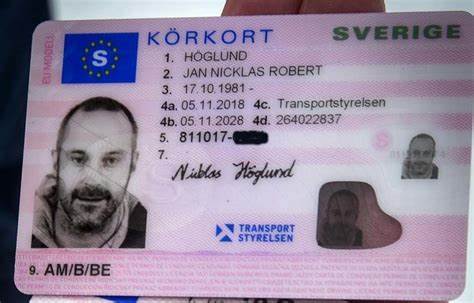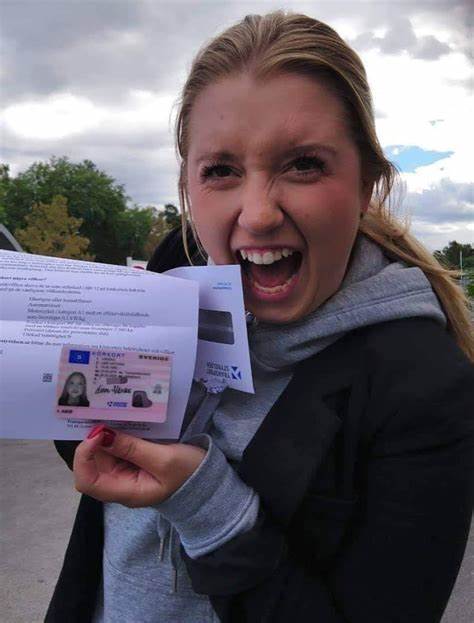What's The Most Common Swedish Driving License Online Debate Could Be …
페이지 정보

본문

Navigating the World Without a Driver's License: Exploring Alternatives and Implications
In today's world, where movement is a foundation of day-to-day life, the idea of living without a driver's license may seem overwhelming. However, for some people, the choice to give up a driver's license is a mindful option driven by various aspects, including environmental concerns, cost, and individual preference. This article explores the alternatives to driving and the implications of living without a driver's license, providing a comprehensive guide for those considering this lifestyle.
Comprehending the Decision
Selecting not to have a driver's license is a personal choice that can come from numerous factors. For some, it's a commitment to decreasing their carbon footprint and promoting sustainable living. Others find the cost of owning and maintaining a vehicle excessive, while some simply choose the benefit and liberty of other modes of transport. Despite the inspiration, living without a driver's license needs mindful preparation and a desire to adapt.
Alternatives to Driving
Public Transportation
- Buses and Trains: Public transport systems, such as buses and trains, are typically the most reliable and cost-efficient alternatives. They are available in a lot of metropolitan locations and supply a structured way to browse cities and rural areas.
- Train and Light Rail: In larger cities, trains and light rail systems offer fast and effective travel, typically bypassing heavy traffic and decreasing travel time.
Ride-Sharing Services
- Uber and Lyft: These popular ride-sharing apps provide on-demand transport, making it easy to navigate without a car. They are particularly useful for late-night travel and in areas with restricted public transportation.
- Carpooling: Joining or forming carpool groups can decrease costs and environmental impact. Lots of neighborhood platforms and apps help with carpooling for regular commutes.
Bikes and E-Scooters
- Bicycles: Cycling is a healthy and environmentally friendly way to take a trip, especially for much shorter distances. Numerous cities have committed bike lanes and bike-sharing programs to encourage this mode of transport.
- Electric Scooters: E-scooters are a trendy and convenient option for quick, short journeys. They are typically readily available through rental services in city areas and can be a fun option to standard modes of transportation.
Walking and Jogging
- Strolling: For those living in walkable areas, walking is a simple and reliable method to stay active and navigate. It's free, needs no unique equipment, and benefits the environment.
- Jogging: Similar to strolling, jogging can be a healthy and low-priced method to travel, especially for short distances.
Electric and Hybrid Vehicles
- Electric Scooters and Bikes: For those who still desire the convenience of a personal lorry but are worried about the environment, electric scooters and bikes are a feasible option. They are low-maintenance and produce less emissions.
- Hybrid Cars: If the decision to avoid a driver's license is primarily due to environmental issues, but the requirement for köp körkort utan test a car is inescapable, hybrid automobiles provide a happy medium. They combine conventional gas engines with electric motors to minimize fuel consumption and emissions.
Telecommuting and Remote Work
- Work from Home: Many business now use remote work choices, enabling staff members to work from home or other areas. This can significantly decrease the requirement for everyday commuting and the associated expenses.
- Virtual Meetings: Technology has made it possible to perform organization meetings and other interactions essentially, more decreasing the requirement for travel.
Implications of Living Without a Driver's License
Financial Savings
- Decreased Vehicle Costs: Not having a car indicates preventing costs such as car payments, insurance coverage, maintenance, and fuel.
- Mass Transit Costs: While mass transit does have costs, they are normally lower than those associated with owning a car.
Ecological Impact
- Lower Carbon Emissions: By avoiding the usage of individual lorries, individuals can significantly decrease their carbon footprint, contributing to a more sustainable environment.
- Lowered Traffic Congestion: Fewer automobiles on the roadway can cause minimized traffic jam, making travel more effective for everybody.
Health Benefits
- Increased Physical Activity: Using options like walking, jogging, and biking can improve physical health and psychological wellness.
- Reduced Stress: Avoiding the daily inconveniences of driving, such as traffic and parking, can result in a more relaxed and hassle-free lifestyle.
Social and Community Engagement
- Community Connections: Relying on mass transit or ride-sharing services can cultivate a sense of neighborhood and social interaction.
- Assistance for Local Businesses: Walking or cycling to regional businesses can assist support the local economy and decrease reliance on big, environmentally hostile corporations.
Legal and Practical Considerations
- Identification Issues: In numerous countries, a driver's license functions as a main kind of identification. Individuals without a license might require to carry alternative forms of ID, such as a passport or state-issued ID card.
- Travel Restrictions: Without a driver's license, travel to remote locations or places with limited public transportation can be difficult. Preparation ahead and using alternative transportation methods is important.
FAQs
Q: How can I get around if I live in a rural location without a driver's license?
- A: In backwoods, choices like ride-sharing services, carpooling, and mass transit might be restricted. Think about signing up with neighborhood groups or online platforms to find local carpooling options. Electric scooters and bikes can likewise work for shorter ranges. In addition, numerous rural areas have neighborhood transport services that can be accessed for essential journeys.
Q: Can I still travel globally without a driver's license?
- A: Absolutely. A driver's license is not required for the majority of international travel. Nevertheless, you might require a passport or other forms of identification. For countries where driving is needed, you can lease a car with a valid driver's license or use regional transportation services.
Q: What are the very best apps for finding ride-sharing and carpooling options?
- A: Popular apps for ride-sharing consist of Uber, Lyft, and Bolt. For carpooling, Waze Carpool, Ridester, and Scoop are highly advised. These apps frequently offer real-time info on available rides and assist connect you with motorists heading in the very same direction.
Q: How do I manage without a driver's license if it is required for lots of kinds of identification?
- A: In lots of locations, a state-issued ID card or a passport can act as a primary type of recognition. It's likewise a good idea to carry multiple types of ID, such as a charge card or a voter registration card, to ensure you are gotten ready for numerous situations.
Q: Are there any health dangers associated with using public transport?
- A: While public transport can expose people to a higher risk of infectious illness, particularly in congested conditions, the benefits typically exceed the dangers. Practicing great hygiene, such as cleaning hands frequently and wearing a mask, can help alleviate these dangers. Furthermore, lots of public transport systems have actually implemented precaution to safeguard passengers.
Q: What are the ecological benefits of not driving a car?
- A: Not driving a car can substantially reduce your carbon footprint. Cars and trucks are a major source of greenhouse gas emissions, and by choosing public transport, biking, or strolling, you can contribute to a healthier environment. This also helps lower air pollution and traffic blockage, improving general quality of life.
Living without a driver's license is a feasible and typically helpful choice for lots of individuals. By exploring and making use of alternative modes of transportation, one can save cash, lower their environmental impact, and enhance their health and wellness. While there are obstacles, such as navigating recognition and travel issues, the benefits typically make the effort rewarding. Whether driven by individual values or useful considerations, the choice to pass up a driver's license can lead to a more sustainable and satisfying way of life.
Extra Resources
- Public Transport Apps: Transit, Moovit, Citymapper
- Biking and Walking Apps: Strava, MapMyRide, Google Maps
- Community Carpooling Platforms: Waze Carpool, Ridester, Scoop
- Remote Work and Telecommuting Tools: Zoom, Microsoft Teams, Slack
By accepting these alternatives, individuals can create a way of life that lines up with their worths and needs, contributing to a more sustainable and linked world.

- 이전글8 Tips To Increase Your Dolche Gusto Game 25.06.27
- 다음글9 Signs That You're The Fake IELTS Certificate Expert 25.06.27
댓글목록
등록된 댓글이 없습니다.